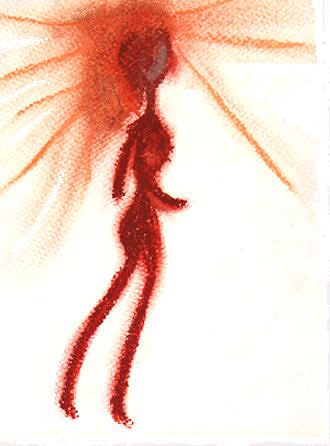The Goddess as Enabler
Truly "the Goddess often comes to affect her consort as prakrti affects purusa -- animating him and implementing his latent powers."1 Goddesses such as Radhu, the consort of Krishna, who are identified as both a god's sakti and the prakrti to his purusa, fulfill an essential role. Without Radhu, Krishna declares, "just as a potter cannot make a pot without clay, so he cannot create the universe," for "he is powerless without her."2 In their substance-attribute relationship, in which "He is milk, she its whiteness," he fire and she "the power of burning" (dahika-sakti), Radha is in fact that which "allows the substance [Krishna] to realize its own nature."3
| 
|
Siva and Sakti (here the goddess) as seen through the Tantric lens share a similar relationship:
Siva is the cause of bondage, Sakti the cause of liberation. She is the life power of the universe; without her, who is symbolized in the letter i, Siva is Sava, a dead body.4
This relationship is seen by Doniger as the Goddess reviving Siva through copulation, or sexual power.5 Indeed, the Tantric practitioner of yoga's goal is to awaken Sakti, so that she may travel from spine to head and effect liberation for the meditator through her joinging with Siva.6 And in the Manu Smrtih, intercourse is seen as regenerative:
The husband
having joined in intercourse
with his wife,
being an embryo [again],
is born at this time.
This conception [is] the characteristic of a wife,
that he is born again in her.7
At the same time, in the Devi-mahatmya construction of the Madhu-Kaitabha myth we find that the goddess holds the same essential power, but that it moves in the opposite direction: apart. Devi is perceived as Yoganidra, the personification of yoganidra ("the twilight slumber of tranquility" into which Visnu has entered), through whose "graceful withdrawal" Visnu is enabled to act.8